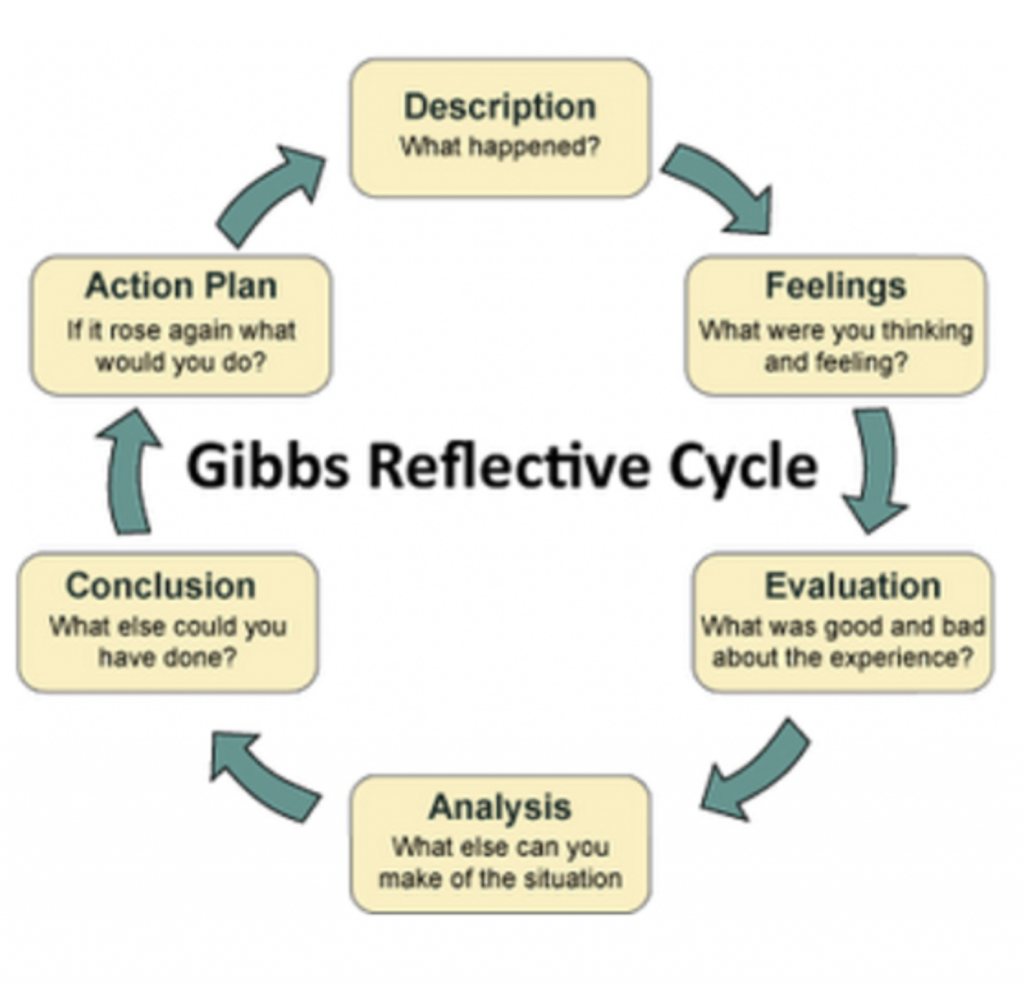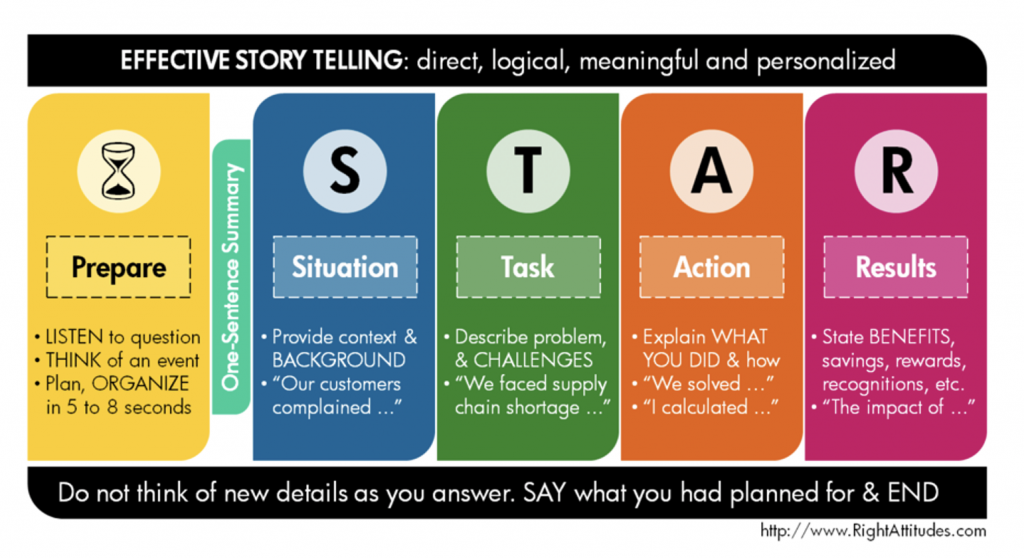The Interview and the Introvert
For someone who suffers from an anxiety disorder, ‘ simulated interviews’ equates to my version of ‘simulated hell’. Yet despite my initial feelings, this experience has provided me with useful, constructive feedback in preparation for real job interviews and helped familiarize me with the process.
To systematically reflect and examine my experience of the stimulated interview task, I will use Gibbs’ Reflective Cycle (1988).

What position did I select?
My mother is a SEN teacher, and her love for her job has been very influential on my own career path; thus, I chose to interview for a SEN teacher position at Glenveagh Special School, Belfast. In drafting possible answers, I employed the STAR method, which consists of including ‘examples of competency demonstrations that include a situation or task, the specific action taken, and the result of the action’ (Brumm, T., Mickelson, S. and White, P., 2006. P.28). The method allows interviewers to gain detailed information about a candidate’s experience and ability to think critically, solve problems, and interact with others. However, despite prior preparation and research, I knew I wouldn’t be able to control every element of the interview, and the prospect of the panel asking a question I wasn’t prepared for terrified me. Every interview is structured differently, and each setting could have ‘widely differing environments and tones’ (Heath, P., Burke, S. and Close, B., 2000. p.143). However, learning by experience, as Britzman (1991, p.33) states, ‘is a fundamental value in the process of becoming a teacher,’ so I embraced the task as a chance to build upon communication skills, develop interview strategies and expose myself to a more pressured environment.

Evaluating the interview
Evaluating how I initially approached the interview, I focused on two areas; ‘ingratiation and self-promotion’ (Muir, C. 2005. p.157). In terms of ingratiation, ‘Knowledge of their [the establishment] beliefs gives you an advantage’(Heath, P., Burke, S. and Close, B., 2000. p.144) when being interviewed. In the job description, heavy emphasis was placed on the Values Orientation section; thus, incorporating the school’s values into my answers was beneficial. Clive Muir (2005. p.156) argues that ‘you need to “connect” with the interviewer interpersonally’, and assessing my response, I successfully appealed to the school’s community by relating my own beliefs to their ethos that ‘each pupil’s learning potential has no limits’.

The second area I focused on was self-promotion. When questioned about my enthusiasm, I effectively expanded on my previous experiences within the field and how I aspire to find meaning and significance in a career by making a positive difference in a child’s life. In the job description, a ‘willingness to learn’ was emphasised because ‘If teachers are not invested in being learners, it will be difficult to help them grow with the faculty’(Heath, P., Burke, S. and Close, B., 2000. p.143). To present myself as an ideal candidate, I highlighted my ability to self-reflect to improve practice, demonstrating my willingness to build my personal, professional development to be up to date with current teaching methods. Moreover, as SEN teachers require ‘Well-designed and implemented classroom management systems’ (Oliver, R. and Reschly, D., 2010. p.189) I stressed the importance of following a TEACCH set up in class, as it is beneficial for pupils with ASD but also provides a structure for all SLD pupils.
Reflecting on peer feedback
Analysing peer feedback, the panel positively received the importance of mindfulness I placed within the classroom. Often ‘Special educators are at high risk for burnout as their working conditions align with many factors associated with burnout’ (Brunsting, N., Sreckovic, M. and Lane, K., 2014. p.681). Unfortunately, SEN students have also become very suspectable to burnout, as reflecting on the impact of Covid, ‘experts predict permanent damage to their mental health’ (Rose, N., 2020. p.30). In my responses, I identified how the pandemic had been a learning curve for teachers and students alike, with newfound importance on rest, exercise, and quiet time. When questioned about my weakness, I explained how as someone who often struggles with a work-life balance, the coping skills I have learned in this period of uncertainty are transferrable to students as my role is not only to meet educational needs but also to aid with social and emotional support development of students.
On the other hand, I feel that my anxiety disorder hindered my performance in the interview. As Clive Muir notes (2005. p.157), ‘some applicants are more adept than others at scanning the interview environment, assessing the interviewer’s style, and then adjusting their behaviours to portray the image most appropriate to the situation’. Assessing how I responded to the environment, I felt that I was too tense and timid, and this is reflected in the peer feedback where one member commented, ‘answers could have been delivered louder’. Additionally, I could have condensed some of my answers using the STAR method. I employed the technique when giving an example of a time I have handled conflict and expanded on a previous situation involving a child with complex, challenging behaviour but minimal vocabulary. Although I covered all letters of the acronym, I wasn’t concise enough in my response, and it became challenging to follow and appreciate the value of my experience.
On reflection, despite being proud of my answers, I wish I had presented more confidently, as being approachable is a fundamental quality of being an educator. However, I feel that it is important to note that receiving mainly positive feedback from my peers has instilled a greater sense of confidence in my knowledge and increased my self-esteem, which will hopefully translate to my following interview. According to scholar James Eison (1990. p.23), to improve self-confidence, ‘seek feedback from both students and colleagues’; thus, I plan to conduct more mock interviews with family, friends, and professionals at the university and request constructive feedback.
Bibliography
- Britzman, D., 1991. Practice makes practice: A critical study of learning to teach. Albany: State University of New York Press, p.33.
- Brumm, T., Mickelson, S. and White, P., 2006. Integrating Behavioral-Based Interviewing Into the Curricula. NACTA Journal, 50(2), p.28.
- Brunsting, N., Sreckovic, M. and Lane, K., 2014. Special Education Teacher Burnout: A Synthesis of Research from 1979 to 2013. Education and Treatment of Children, 37(4), p.681.
- Gibbs, G. (1988) Learning by Doing : A Guide to Teaching and Learning Methods. Oxford, Polytechnic: Further Educational Unit.
- Heath, P., Burke, S. and Close, B., 2000. Middle Talk: Planning for the Job Interview. The English Journal, 89(5), pp. 143-144.
- Muir, C., 2005. Managing the Initial Job Interview: Smile, Schmooze, and Get Hired?. Academy of Management Perspectives, 19(1), pp.156-157.
- Rose, N., 2020. SOCIAL SUFFERING. RSA Journal, 166(2), p.30.
Reach for the STAR
You May Also Like

When the BBC thinks you live in the Atlantic – My Simulated Interview
17 February 2022
So You Want To Be A Teacher?
17 February 2022
